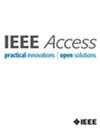Modified Swarm-Based Artificial Intelligence Optimization for Optimal Coordination of Directional Overcurrent Relays in Power System
IF 3.4
3区 计算机科学
Q2 COMPUTER SCIENCE, INFORMATION SYSTEMS
引用次数: 0
Abstract
The coordination of directional overcurrent relays (DOCRs) plays a critical role in ensuring the reliability and robustness of modern electrical power protection systems. Achieving optimal relay coordination in multi-loop power networks is a complex optimization challenge requiring the minimization of relay operating times and achieve optimal tuning of time dial settings (TDS) and plug settings (PS) while considering the impact of DG integration. The proposed method employs a Quantum-Inspired Adaptive Walrus Optimization Algorithm (QIAWOA), a modified swarm-based artificial intelligence technique (AI) that incorporate rates quantum-inspired principles, such as adaptive quantum rotation gates, to enhance search dynamics and facilitate precise relay coordination. The performance of QIAWOA is validated using the IEEE 3, 8, and 15-bus systems, as well as the CEC 2020 benchmark suite, which includes multimodal and multi-objective optimization functions (MMOOF). QIAWOA demonstrates superior capabilities in identifying globally optimal solutions, significantly reducing relay operating times, and achieving robust coordination. Comprehensive statistical analyses, including empirical cumulative distribution functions (CDF), boxplots, histograms, probability plots, and quantile-quantile (QQ) plots, underscore the reliability and efficiency of the proposed method. Comparative evaluations with state-of-the-art nature-inspired techniques further highlight the enhanced performance of QIAWOA, establishing it as a powerful tool for improving the protection system performance in complex power networks.电力系统定向过流继电器优化协调的改进群智能优化
定向过流继电器的协调对保证现代电力保护系统的可靠性和鲁棒性起着至关重要的作用。在多环路电网中实现最佳继电器协调是一项复杂的优化挑战,需要在考虑DG集成影响的同时,最大限度地减少继电器运行时间,实现时间拨盘设置(TDS)和插头设置(PS)的最佳调谐。该方法采用量子启发自适应海象优化算法(QIAWOA),这是一种改进的基于群体的人工智能技术(AI),它结合了自适应量子旋转门等速率量子启发原理,以增强搜索动态并促进精确的中继协调。qiawa的性能通过IEEE 3、8和15总线系统以及CEC 2020基准测试套件进行了验证,其中包括多模式和多目标优化功能(MMOOF)。QIAWOA在识别全局最佳解决方案、显著减少中继操作时间和实现稳健协调方面展示了卓越的能力。综合统计分析,包括经验累积分布函数(CDF)、箱线图、直方图、概率图和分位数-分位数(QQ)图,强调了该方法的可靠性和有效性。与最先进的自然启发技术的比较评估进一步突出了QIAWOA的增强性能,使其成为提高复杂电网中保护系统性能的有力工具。
本文章由计算机程序翻译,如有差异,请以英文原文为准。
求助全文
约1分钟内获得全文
求助全文
来源期刊

IEEE Access
COMPUTER SCIENCE, INFORMATION SYSTEMSENGIN-ENGINEERING, ELECTRICAL & ELECTRONIC
CiteScore
9.80
自引率
7.70%
发文量
6673
审稿时长
6 weeks
期刊介绍:
IEEE Access® is a multidisciplinary, open access (OA), applications-oriented, all-electronic archival journal that continuously presents the results of original research or development across all of IEEE''s fields of interest.
IEEE Access will publish articles that are of high interest to readers, original, technically correct, and clearly presented. Supported by author publication charges (APC), its hallmarks are a rapid peer review and publication process with open access to all readers. Unlike IEEE''s traditional Transactions or Journals, reviews are "binary", in that reviewers will either Accept or Reject an article in the form it is submitted in order to achieve rapid turnaround. Especially encouraged are submissions on:
Multidisciplinary topics, or applications-oriented articles and negative results that do not fit within the scope of IEEE''s traditional journals.
Practical articles discussing new experiments or measurement techniques, interesting solutions to engineering.
Development of new or improved fabrication or manufacturing techniques.
Reviews or survey articles of new or evolving fields oriented to assist others in understanding the new area.
 求助内容:
求助内容: 应助结果提醒方式:
应助结果提醒方式:


